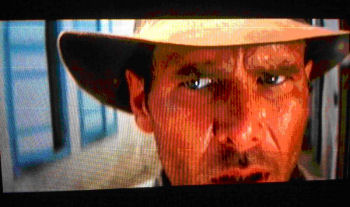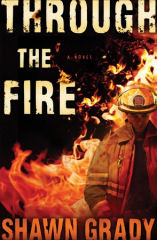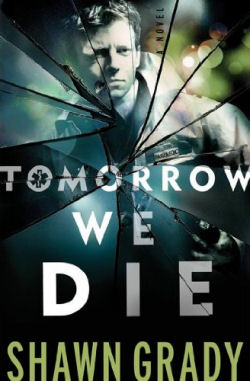
Shawn Grady has served for over a decade as a firefighter and paramedic in Reno, Nevada, where he lives with his wife and three children. He is the author of the novels Through the Fire and the forthcoming Tomorrow We Die (Bethany House, Summer 2010). Visit him at http://www.shawngradybooks.com. |
He Wouldn’t Have Lived If I Hadn’t Shot Him |
|
Curiosity piqued? Or how about this: “I spent the day chasing the Angel of Death.” Make you want to read more? What makes us want to take home a book by an author we are unfamiliar with? Is it the cover? Dust jacket copy? The premise? Genre? What pushes us over that line from an inquisitive peruser, who has “heard great things” about a novel, to a committed reader? If you’re anything like me, the number of books you want to read is in drastic disproportion to the amount of time you actually have, so perhaps one of the most significant elements you look for in an unknown author is voice. And with strong voice, that first sentence can make the reader want to read the first paragraph. The first paragraph can lead to the first page, and the first page to the first chapter. By that point, if not before, I am ready to commit to the book. Dare Them Not to Read On But what is it that keeps us reading a book? Opening lines can lure an audience. But how about setting that hook? Chapter closers play an integral role in making sure the reader can’t help but take a book home. With my debut novel, Through the Fire, I’ve received a decent amount of positive feedback on the close of the first chapter. Something about it seems to grab readers and make them want to read the whole thing. The final page of the first chapter has veteran fireman Aidan O’Neill leading the probie assigned to him deeper into an inferno, against orders, in search of a missing boy: I felt the frame of a doorway and swiveled my head to make sure I still had him. But he hadn’t moved. He knelt, frozen with indecision, as though his knees and gloves were affixed to the floor. There I saw in his face, through the clear curvature of his mask and the gold-lit reflections of fire, the simple look of a child, innocent and uncertain. It can be very effective to establish the reader with a sympathetic protagonist straightaway. Someone likable, while imperfect. Then let them descend. Let the hero wind his or her way down through the circles of hell. Spare no trial or tribulation. Take them to the point where the only choice left is to reach their goal or die trying. Challenge the reader not to satiate the burning desire to know what will happen next. How Fair Is That? Decades ago the serial cliffhanger reigned in movie houses across the country. It cost fifty cents and a week of suspense to find |
out what happened next to Buck Rogers or Zorro. Curiosity and an affinity for the heroes kept audiences coming back. Lawrence Kasdan’s screenplay for Raiders of the Lost Ark combined with Steven Spielberg’s directorial giftedness fashioned a full-length film that demonstrates the art of the cliffhanger. Sure, we don’t have to wait a full week to find out what’s going to happen, but the film’s pacing keeps us constantly wondering chapter after visual chapter how things are going to shake out.
Just what is it that Indy is looking at? We’ve got to know! Who skips out for popcorn right then? Like chapters in a book, we see the hero placed in dire situations crafted in such a way to keep the viewer’s appetite constantly whetted to find out what happens next. Jim Bell, You Dirty Dog Every Luke needs an Obi-Wan. So who better to look to than an author Publishers Weekly calls “a master of the cliffhanger”: James Scott Bell. Bell once related (now something of an urban legend in the Christian writing community) standing in line at a store and being called a “dirty dog” by a woman who also asserted that he had kept her “up all night,” bringing a disapproving glare from the elderly woman in front of him. Aside from the laugh-out-loud predicament, the story carries with it a core message: Great suspense keeps readers turning the pages. *Check out Jim Bell’s firsthand account of the “Dirty Dog” story HERE. |











